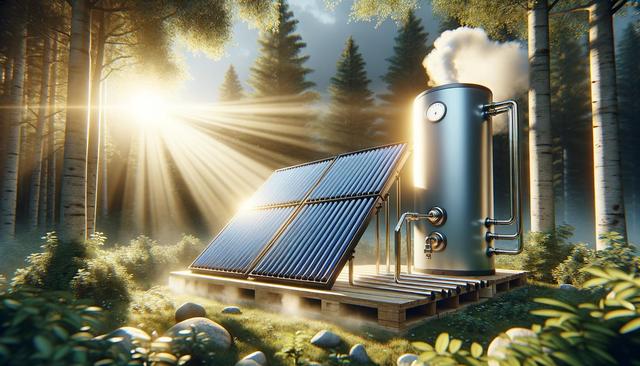
How Solar Heaters Warm Your Water Naturally
Understanding the Basics of Solar Water Heating
Solar water heaters use the natural energy of the sun to heat water for domestic use. Unlike traditional systems that rely on electricity or gas, solar heaters operate through a series of components that work together to capture, transfer, and store thermal energy. The core parts of a solar water heater include solar collectors, a storage tank, and a circulation system. The collector, typically placed on a rooftop, absorbs sunlight and converts it into heat. This heat is then transferred to the water in the system, which is stored in an insulated tank until needed.
There are two main types of solar water heating systems: active and passive. Active systems use electric pumps or controls to move water or a heat-transfer fluid through the system, while passive systems rely on gravity and natural convection. Each type has its own advantages, with passive systems being simpler and often more durable, and active systems offering more control and efficiency in varied climates.
How Solar Collectors Work
Solar collectors are the critical component responsible for gathering solar energy. The most common types are flat-plate collectors and evacuated tube collectors. Flat-plate collectors consist of a dark absorber plate under a glass cover, which captures sunlight and transfers the heat to a fluid running through pipes. Evacuated tube collectors, on the other hand, use a series of glass tubes that contain a heat-absorbing material and are more efficient in colder environments.
Key features of solar collectors include:
- Durability against weather conditions
- High thermal conductivity materials
- Insulation to minimize heat loss
The positioning of the collector also impacts its performance. Ideally, collectors should be installed facing the sun for maximum exposure. In the northern hemisphere, this means a southern orientation, with a tilt angle optimized for the local latitude.
Heat Transfer and Storage Mechanisms
Once the solar collector has absorbed heat, the next step is transferring that energy into the water. This is done through a circulating fluid—either water or an antifreeze solution—depending on the system design. The heated fluid passes through a heat exchanger, which then warms the water in the storage tank. This design allows for efficient heat transfer while minimizing the risk of freezing in colder climates.
Storage tanks vary in size and insulation quality, but their primary function is to retain the heated water until it is needed. Some systems integrate a conventional backup heater to ensure hot water availability during cloudy days or high-demand periods. This hybrid approach provides both efficiency and reliability.
Benefits of Using Solar Water Heaters
Installing a solar water heater brings several practical advantages. For households, it means a significant reduction in utility bills, particularly in sunny regions. The environmental benefits are also notable, as solar heating systems produce no direct emissions. Additionally, maintenance requirements for solar heaters are generally low, especially for passive systems.
Some of the primary benefits include:
- Reduced energy consumption from non-renewable sources
- Lower long-term operating costs
- Increased home value due to sustainable features
- Government incentives or rebates in many regions
Depending on the local climate and water usage, solar heaters can provide up to 80% of a household’s hot water needs. For businesses and institutions, larger systems can serve extensive hot water demands, contributing to broader sustainability goals.
Choosing and Maintaining a Solar Water Heating System
Selecting the right solar water heater depends on various factors, including climate, household size, and hot water usage patterns. It’s important to consider system efficiency ratings, material quality, and warranty options. Working with a qualified installer ensures proper placement and integration with existing plumbing.
Regular maintenance is relatively minimal but essential to ensure long-term performance. This typically includes:
- Periodic inspection of the solar collector for debris or damage
- Checking the fluid levels and pressure in active systems
- Flushing the system to remove mineral buildup
- Inspecting the storage tank for leaks or corrosion
With proper care, solar water heating systems can last 15 to 20 years or more, offering a dependable and clean source of hot water. Ensuring routine check-ups helps maintain efficiency and extend the lifespan of the system.